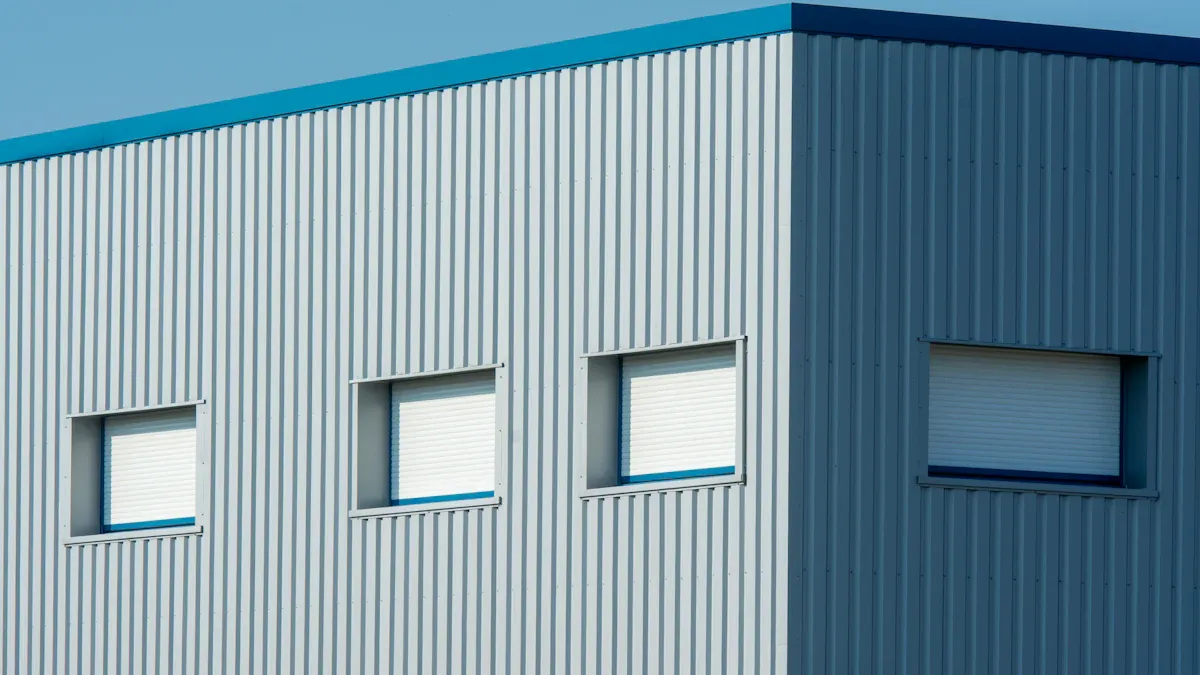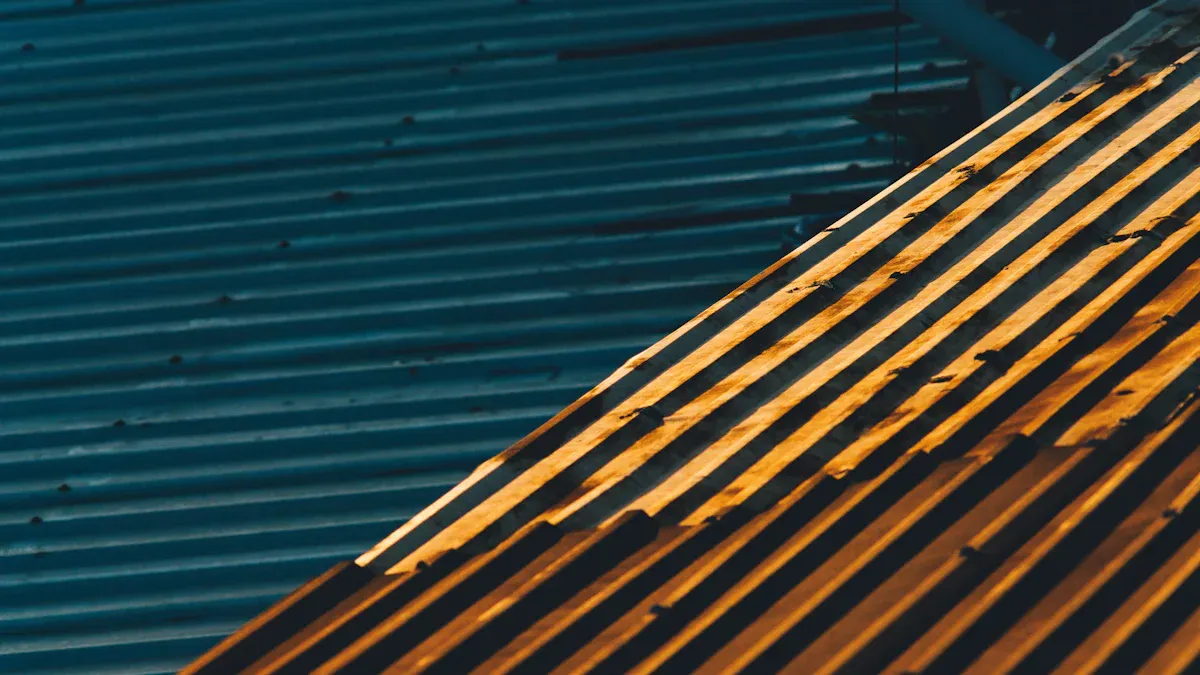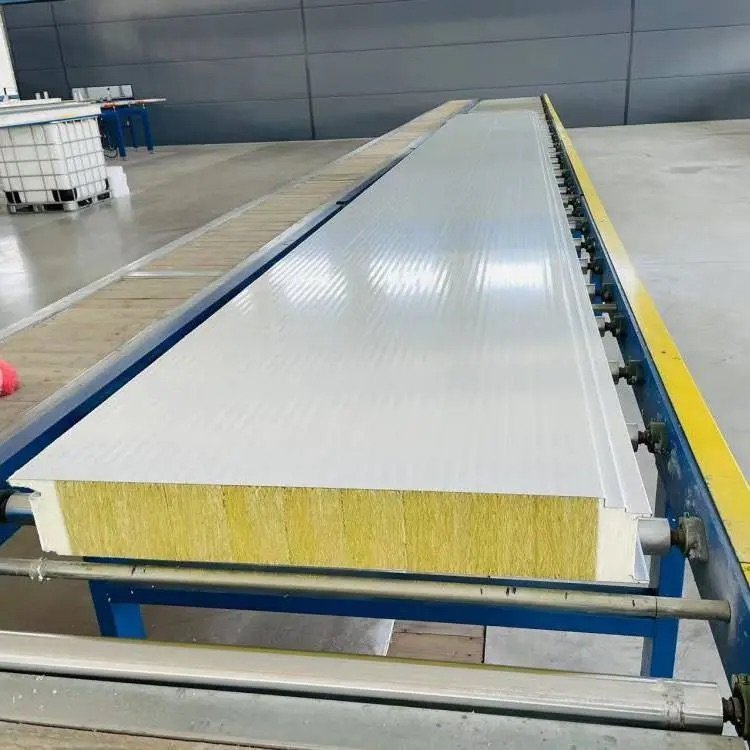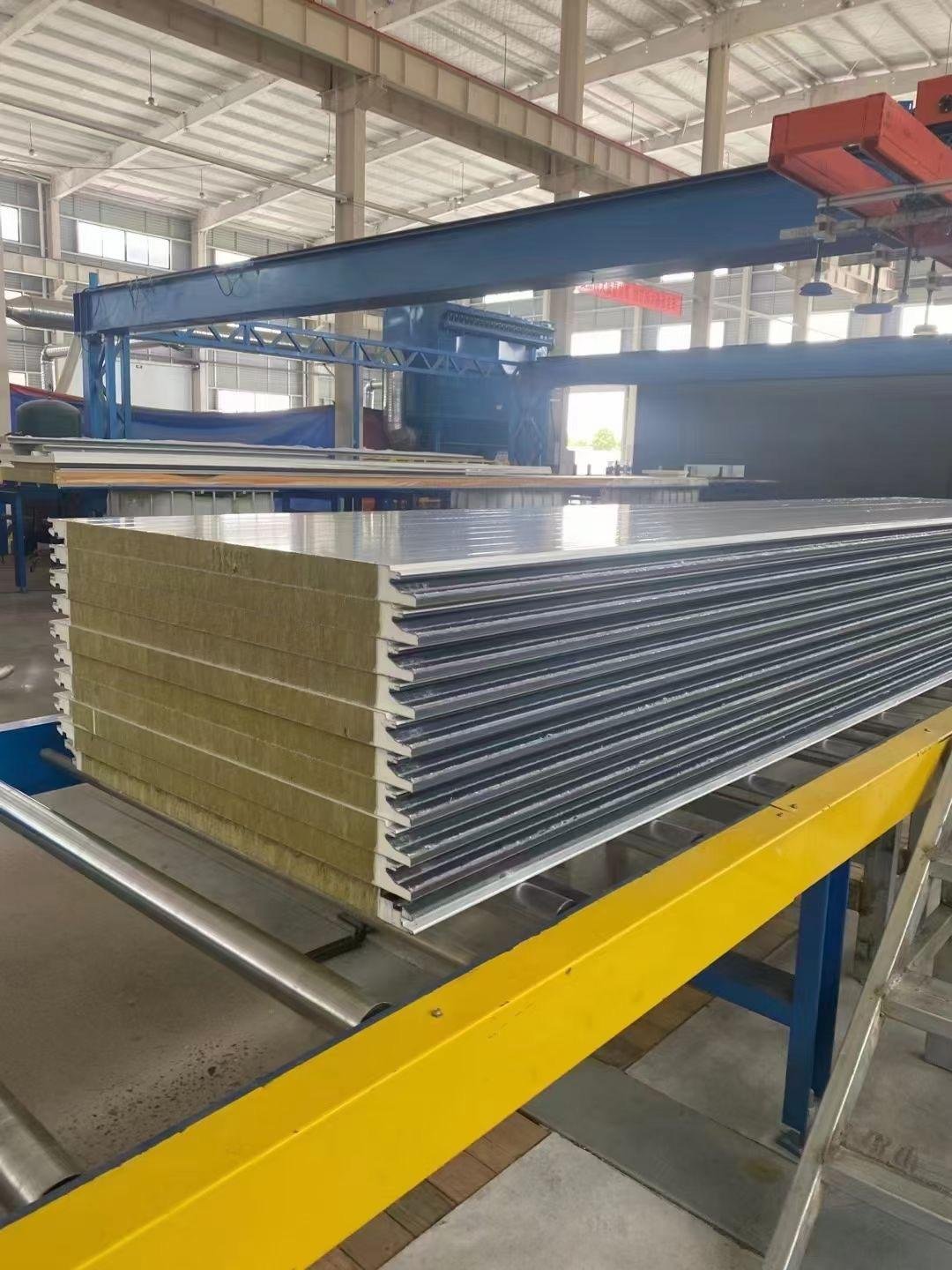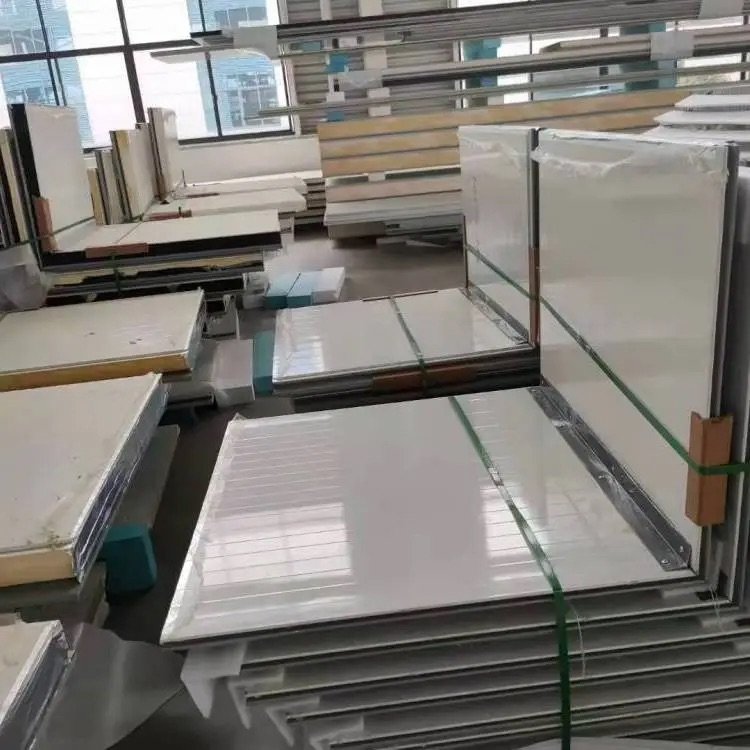
Integrating solar energy systems with sandwich panels mixes green energy and smart materials. This method saves energy by utilizing the insulation of sandwich panels alongside solar power. New solar energy systems technology works better now, and solar panels cost less. For instance, these systems can generate over 16,000 kWh of power yearly. They also achieve heat efficiency levels of 53.7%. Using this concept helps reduce energy consumption and supports eco-friendly building practices.
Key Takeaways
Adding solar panels to sandwich panels saves more energy. This mix cuts heating and cooling needs, saving money and power.
Using solar power at home lowers energy bills each month. It saves money over time and helps the environment.
These systems together cut carbon pollution. Solar panels make clean energy, and sandwich panels keep heat in or out.
Installing them correctly is very important. Use good materials and stop moisture to keep them working well.
Government programs can help with starting costs. Check local plans to make solar systems cheaper and easier to get.
Benefits of Combining Solar Energy Systems with Sandwich Panels
Better Energy Efficiency
Improved insulation and lower energy use
Using solar systems with sandwich panels makes buildings more efficient. Sandwich panels keep heat in or out, reducing the need for heating or cooling. This saves energy and makes buildings eco-friendly. Studies show these systems can make 16,209 kWh of electricity and 1,531 kWh of heat each year. They also reach a heat efficiency of 53.7%.
Using more solar energy on-site
Solar panels let you use renewable energy right where you are. Adding them to sandwich panels uses space well and creates clean energy. This lowers your need for grid power and helps with green building in new or old projects.
Saving Money
Cutting energy bills over time
Combining solar panels with sandwich panels saves money in the long run. Solar panels make electricity on-site, so you use less from the grid. This lowers your monthly bills and gives lasting financial benefits.
Lowering building and running costs
Solar panels can do two jobs at once to save money. For example, Building-Integrated Photovoltaic (BIPV) systems replace regular roofing or walls. This cuts building costs and makes upkeep easier, saving money overall.
Helping the Environment
Lowering carbon emissions
These systems help the planet by cutting greenhouse gases. Solar panels make clean energy, and sandwich panels save energy with better insulation. Some panels, like C-Biotech’s C-Hemp, even remove more carbon than they create, with -7.6 kg CO2e/m² compared to 10-60 kg CO2e/m² for others.
Meeting green building goals
Using these systems helps meet eco-friendly building rules. Certifications like LEED reward designs that save energy and use sustainable materials. Adding solar systems to sandwich panels supports global green goals and makes buildings more valuable.
Technical Aspects of Solar Energy Systems and Sandwich Panels
Compatibility of Solar Panels with Sandwich Panels
Material compatibility and structural considerations
Solar panels and sandwich panels must work well together. Sandwich panels often have metal or composite surfaces with insulating cores. These cores provide a strong base for solar panels. The panels must also hold the weight of the solar system. Research shows errors in material tests range from 0.37 to 1.48. This proves that simulations can predict how materials will perform.
Ensuring proper thermal and moisture resistance
Heat and moisture resistance are important for lasting performance. Solar panels produce heat, which can affect sandwich panel insulation. Good designs reduce this impact. Tests show cladding layer temperatures match predicted results. This proves the systems work well together. Using moisture-resistant materials also prevents long-term damage.
Installation Methods
Mounting techniques for solar panels on sandwich panels
Mounting solar panels needs careful planning. Thin-film solar modules can fit into wall spaces for a smooth look. Insulation between solar modules and panels improves both function and appearance. Tools like solar meters and thermocouples check performance during setup. This ensures the best results.
Wiring and electrical integration for optimal performance
Good wiring is key for energy transfer. High-quality cables and connectors reduce energy loss. New tech, like half-cut cell modules, boosts efficiency and handles shading better. A smart electrical layout keeps solar systems working well, even in tough conditions.
Design Considerations
Orientation and placement for maximum solar efficiency
Where you place solar panels affects how well they work. In the Northern Hemisphere, panels should face south. The tilt angle should match your location’s latitude. This setup improves efficiency by 25-35%. Single-axis trackers can increase energy by 25-35%. Dual-axis trackers can boost it by up to 40%.
Aesthetic and architectural integration
Solar panels can match building designs. Thin-film modules and custom colors keep buildings looking good. Adding solar panels to roofs or walls creates a modern, green design. This keeps the building stylish and functional.
Challenges and Solutions in Using Solar Energy
Structural Strength
Handling weight and wind pressure
When adding solar panels to sandwich panels, strength is key. The structure must hold extra weight and resist strong winds. Sandwich panels are light but strong, making them a good base. Tests show performance changes based on the cladding layer used.
Cladding Layer | Average Error | Square Error |
|---|---|---|
1 | N/A | |
2 | 1.48 | 2.03 |
3 | 0.37 | 0.46 |
4 | 0.85 | N/A |
This table shows why choosing the right materials is important.
Making panels stronger
Adding stronger materials or supports can make panels last longer. Using tough glue or metal brackets helps them carry more weight. These methods protect the system from damage and make it last longer.
Keeping Systems Working
Easy cleaning and fixing
Regular care keeps systems working well. Designs should allow easy cleaning and repairs. Clean panels work better because dirt blocks sunlight.
Solar panels built into buildings must be as reliable as regular ones.
Good airflow stops overheating, which can cause damage.
Testing in real conditions ensures safety and good performance.
Reducing damage over time
Heat and moisture can harm systems. Using materials that resist water and heat can help. These steps protect both solar and sandwich panels, keeping them reliable for years.
Costs
Balancing costs and savings
Starting costs for solar and sandwich panels can be high. But saving money on energy bills makes up for it over time.
Cost Type | Details |
|---|---|
Starting Costs | |
Long-term Savings | Lower energy bills and fewer traditional material costs. |
Maintenance Costs | Low upkeep makes it cheaper over time. |
Government Help | Grants and incentives make solar systems more affordable. |
Using financial help
Government programs can lower starting costs. These programs support renewable energy and make solar systems cheaper. This makes it easier to use solar energy in buildings.

Using solar energy systems with sandwich panels has many benefits. You save energy, cut costs, and help the environment. It also solves issues like strength and upkeep. This mix makes buildings useful and eco-friendly.
This idea could change how we build. Studies show important goals for future projects:
Metric/Consideration | Description |
|---|---|
Performance and Cost | Systems should last long with little fixing needed. |
Aesthetics | Designs must look good and stay flexible. |
Process Integration | Setup should save energy and improve design. |
Reliability, Durability, Safety | Systems must work as well as regular materials in all conditions. |
Supply Chain Integration | Dependable suppliers and smooth production are important. |
Ideal Requirements | Nice looks, fast setup, and great energy use are key. |
This new method can change how we see green building. By using these systems, you help the planet and improve buildings. Try this idea for your next project and lead in eco-friendly design. 🌱
FAQ
What are sandwich panels, and why are they used in construction?
Sandwich panels are light materials with two outer layers and an insulated middle. They are strong, long-lasting, and keep heat in or out well. Builders use them for walls, roofs, and facades to save energy and cut costs.
Can solar panels damage sandwich panels over time?
No, solar panels won’t harm sandwich panels if installed properly. Using the right mounting methods and water-resistant materials keeps them safe. Regular care stops damage and helps both systems last for many years.
How do you clean solar panels on sandwich panel constructions?
Clean panels with a soft brush or sponge and water. Don’t use rough tools or strong chemicals. Clean early morning or evening to avoid water spots from heat. Keeping panels clean helps them work their best.
Are there government incentives for integrating solar panels with sandwich panels?
Yes, many governments give tax breaks, grants, or rebates for green energy. Look into local programs to lower starting costs. These incentives make solar systems cheaper and support eco-friendly building.
What is the lifespan of a solar energy system on sandwich panels?
Solar panels usually last 25-30 years, and sandwich panels can last longer with good care. Regular checks and upkeep make them last even more. High-quality materials ensure they work well for a long time.
💡 Tip: Always hire experts for setup and care to make your systems last longer.

